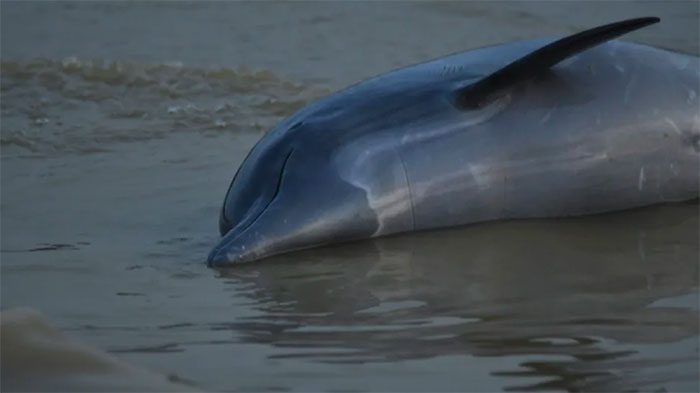Over 100 dolphins have died in the Amazon River (Brazil) amid a historic drought and record-high water temperatures, with some areas exceeding 39 degrees Celsius.
According to the Mamirauá Institute, a research facility funded by Brazil’s Ministry of Science, the dolphin carcasses have been found in Tefé Lake over the past week. The institute stated that the high number of dead dolphins is unusual and attributed the cause to the record-high lake temperatures and the ongoing historic drought in the Amazon.

Dolphin carcasses washed up on the shore of Tefé Lake. (Photo: Mamirauá Institute).
This news serves as a warning and raises concerns among climate scientists regarding the impacts of human activity and the severe drought currently affecting the region.
“It is still early to determine the cause of this extreme phenomenon, but according to experts, this event is certainly related to the drought and high temperatures in Tefé Lake, where some places have temperatures exceeding 39 degrees Celsius,” a representative of the institute told CNN Brasil.
The Amazon River, the largest waterway in the world, is currently experiencing its dry season, and several aquatic species are also facing record-high temperatures.
Researchers and activists are attempting to rescue the surviving dolphins by relocating them from ponds and lakes in the suburbs to the main river channel, where the water is cooler. However, this operation is not easy due to the area’s isolation.
André Coelho, a researcher at the Mamirauá Institute, analyzed: “Transferring the dolphins to other rivers is not safe because it is crucial to verify whether there are toxins or viruses in the new environment.”
The historic drought in the Amazon is also impacting the region’s economy. Below-average water levels have been recorded in 59 municipalities in the state of Amazonas, hindering transportation and fishing activities on the river.
Authorities predict that the drought will intensify in the coming weeks, potentially leading to more dolphin deaths.




















































